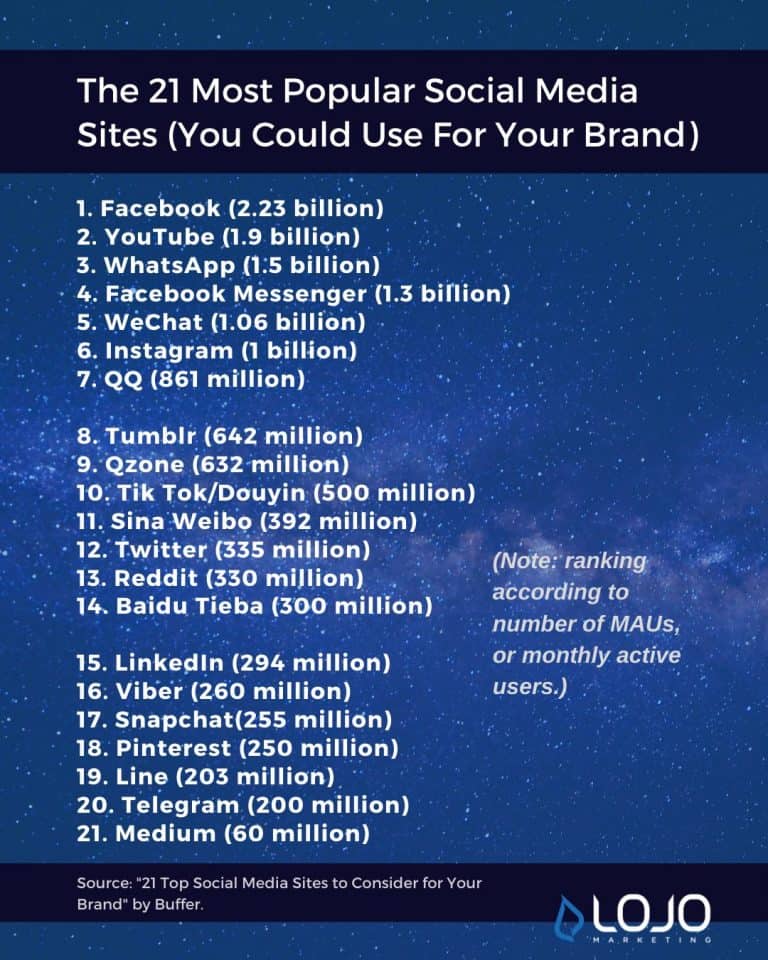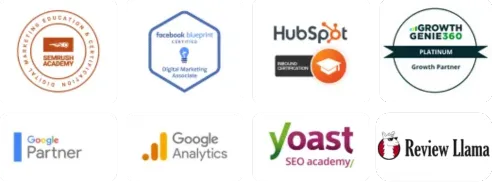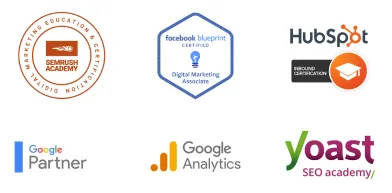TO LEARN IS TO GROW
Learning Center
We do our research and publish our results. Should probably call this the Growing Center.


The Many Types of Content Marketing
There are many types of content marketing that you can employ when it comes to building your brand or promoting your business. Content marketing is one of the best techniques in connecting with your target market, and understanding the different forms of this strategy will only maximize a brand’s chances of success.
Content marketing is an effective method in increasing your brand’s popularity. However, this strategy comes in several forms, and it can be hard to make the best choice for your business.
Understanding the different types of content marketing will surely help in deciding how you wish to sell your products and services.
The content you choose for your business will significantly affect how your brand is viewed by the online market. The digital footprint lasts almost permanently, so you need to be quite careful in crafting how you wish your business to be represented.
To give you a better grasp of your options, here are some of the most popular content marketing strategies that experts recommend for both growing and established businesses.
1. Blogging
Blogging is one of the most common and arguably the most effective marketing tools on the internet right now. You can set up a blog yourself and write your own content, too, while paying for nothing in exchange.
Why does blogging work so well? It is because people value a good relationship, and that applies to doing business as well. Blogs create an interactive connection between the writer and the readers by sharing a common interest.
Bloggers can passionately discuss anything they want to on their personal sites, and if the readers feel the same way (or sometimes even the opposite), there is bound to be engagement.
This engagement works best when used to create a lasting impression for your business. You can use your blog to introduce your readers to your products and services, but you need to make sure you are still catering to their interests so that they can better appreciate your page. Otherwise, you are risking losing your readers.
Aside from building bridges with potential customers, blogging can also be used with SEO techniques to increase your website traffic and strengthen your business’s online presence.
2. Videos
People tend to pay more attention to moving animations over blocks of text, and that is why content marketing through video is doing well now. Integrating videos into your web content is a great way to attract new customers who would rather watch a 30-second clip than read a couple of paragraphs.
Keep in mind that people have different interests, and there will be customers who prefer watching videos than reading blogs or listening to podcasts. According to statistics, millennial customers show the strongest preference for video content from businesses. If millennials are your target market, videos should be among your top choices for content marketing.
The important thing is to ensure that your video content is good enough to keep them interested and engaged with your page until they get swayed into supporting your business.
Around 54% of customers prefer seeing video content from businesses they support, so continuing to produce quality videos should also help you retain your current clients.
3. Podcasts
Speaking of podcasts, they work just like videos in that they cater to a specific audience. Podcasts are for people who prefer to listen to content instead of watching or reading about it.
Podcasts work well with folks who like to multitask, such as listening to a podcast while driving, working out, or cooking at home.
You can create podcast versions of your videos by using programs on the internet that take the audio parts to create a different file. Just remember that since the customers will not be seeing the visual cues you put in the original video, your audio content needs to be just as engaging and interesting to keep them listening.
4. Live Streaming
Live streaming is one the newer trends in content marketing, but it is just as effective.
Similar to pre-recorded videos, live streaming is for customers who like to watch content but with the added excitement of real-time dynamics. By launching your content live, the viewers understand that there are no edits involved, which paves the way for an authentic start to your relationship.
Webinars are also considered live streaming. Hosting webinars is a good way to market your content because you will be able to interact live with your customers, and being able to answer their questions real-time will strengthen your business brand by letting them know you are well-informed and competent about your products.
Live streaming is a fun way to advertise and connect with a large audience, and it really does not hurt that all you need to do this is a smartphone. The sheer accessibility of the feature allows you to reach out to thousands of people while they are at work, out and commuting, or resting at home.
ChilledCow, a popular YouTube content creator has amassed more than 6 million followers for his lofi hip hop radio live stream, with thousands of followers tuned in at any give time for beats to relax/study to.

5. Social Networks
It is absolutely rare for someone not to have social media presence in today’s digital age. Even businesses are active on social media, as they understand just how important it is to keep in touch with their online audience.
There are different types of social media, each delivering to its own audience. The most influential platforms right now are Facebook and Instagram, and it’s almost a necessity to be active on each program every day if you want your business to stay relevant.
That is one of the challenges of using social media, you really have to commit to consistently updating because you can’t afford to lose exposure.
Social media works by using exposure to increase your reach with the audience. A greater number of followers means more opportunities for growth and partnerships, and can quickly put your brand on the map given the right situation.
6. Email Newsletters
Email newsletters allow you to directly reach out to a potential customer, collect their information, and connect with them whenever you need to. This guaranteed connection is the strongest pull of this marketing tool since you don’t need any condition from the other party to be met, you simply need to know his (or her) email address.
To make sure that email marketing succeeds, your newsletter should not only have valuable content that the client won’t find anywhere else, and must also be personalized enough so that the content becomes even more relevant to the recipient.
Add in a few freebies, tie in a promotion from the sales team, or perhaps an exclusive members-only offer he (or she) can’t refuse, and you should be well on your way to nurturing a good relationship with your customers.

7. Photos, Graphics, and Infographics
Content becomes much more attractive given the right visual elements. Photos can significantly change the dynamics of a marketing tool by affecting the mood, tone, and feelings imbued in the ad.
Understanding the effects of photos on the people who see them and being able to use it to your advantage is a necessity in content marketing. If your content uses the right imagery, a business can stand out and draw a larger audience by appealing to the audience’s hearts.
This goes for photos and photo galleries, as well as custom images you might create, including infographics.
Infographics are a great way to present tons of information. Surely you have seen pictures that are filled with facts and figures presented in a way that catches the reader’s interest. These graphic visual representations are called infographics.
A good infographic can turn boring numbers and statistics into a fascinating story, while retelling a dull passage into a shareable story. Infographics work because they allow people to digest a lot of information in just a quick glance.
The strategic use of visual elements and informational trends and patterns appeal to people who like quick and clear reporting of content.
9. Ebooks
You can use eBooks for lead generation by providing potential customers with valuable information or stories that they are interested in exchange for their contact information.
Like regular books, eBooks are a great option if you wish to share content with your audience, with the added advantage of being downloadable and digitally convenient.
Some people also prefer eBooks because they can get them for free on several websites, which isn’t surprising since there aren’t any manufacturing costs in producing one. It’s significantly easier to make an eBook than an actual book due to its digital nature and the fact that you can choose exactly what you want to put in regardless of its length or content.
10. Surveys and Questionnaires
Most people love interaction, and customers enjoy getting their feedback and input taken even more. Making use of surveys and questionnaires to gather data from potential customers is a smart and cost-effective method of content marketing.
You can ask all sorts of questions in your survey forms so that it feels less like a formal interview and more like a fun quiz.
Make sure to keep your questionnaire engaging so that they feel interested enough to finish answering every item. The information you can get from these surveys can greatly help you in developing or improving a product that can better serve their wants and needs.

11. Interviews
Not everyone is comfortable with being interviewed, especially if you tell them you will be showing it to the world for your brand’s content marketing.
On the other hand, there are people born for the spotlight and would be more than willing to represent your business, especially if they really appreciate your product.
A good interview should be insightful and appealing to the general audience. It should not feel staged, instead it should connect to the audience in such a way that they would want to try out your product for themselves.
If done right, an interview should work several times better than an online review because they get to see and hear an actual person sharing his (or her) perspective of your business.

12. Memes
You may not believe this, but memes have become just as potent as the previous examples when it comes to content marketing.
While this strategy is fairly new, several businesses have been able to find success by launching the right meme at the right time.
Memes are images edited with a few words and other add-ons to make a comedic effect. It is easy to get a meme to become viral on the internet as long as you know when to publish it and who the target audience is.
If you can successfully incorporate your business into a meme without ruining its context, you have already won half the battle. You just need to circulate it online and your traffic should increase in no time.
13. Case Studies, Reports, Research Papers, and Whitepapers
Case studies can be used for leads who wish to know more about the business from the customers’ perspective. Interested clients can look into case studies and personally understand a customer’s experience with the business from start till end.
What’s the difference between a case study and a research paper? With a research paper, the author has the intention of taking a deep dive into a particular subject matter, usually with the goal of expanding one’s views about the topic. This means drawing from a wide variety of sources, as opposed to a case study which draws directly from observations of a particular case or scenario.
White papers are opinion pieces that are backed up by technical insight. These are written by your brand’s point of view with the goal of establishing itself as a thought leader of sorts within your space/industry. It is more educational in nature (rather than self-promoting) and can be about high-level concepts or about solving or addressing an issue within the industry.
Reports, on the other had, aren’t opinion-based, but rather relies more on facts, statistics, and figures. These don’t necessarily have to be done or created by your organization; you can actually employ the services of a third party to create these for you.

14. Magazines, Catalogs, and Other Publications
Some people think that in this digital age, print media is dead. However, some experts beg to disagree. In fact, they believe that this is the best opportunity to invest in print media again.
The dependence on digital content has made magazines, catalogs, and other print publications quite harder to find. This rarity allows it to catch more attention and hold that attention longer.
Additionally, print media allows an in-depth discussion with relevant industry content for the readers to enjoy offline, something that can’t be said about internet-dependent platforms like social media.

15. Brochures, Leaflets, and Flyers
Some of the more traditional techniques in content marketing include the use of brochures, leaflets, and fliers.
These paper-based documents are varied in intent and style:
brochures are made up of multiple pages with a commercial purpose, and usually of higher-quality paper or board.
flyers are usually one-paged and were made to inform folks about a special promotion, offer, or event.
leaflets are just like flyers, except that they can be supplied folded, and tend to use lighter types of paper.
Nevertheless, all three share the same purpose, which is to advertise a product or a business.
Using new graphics programs and design apps, companies have relaunched digital variants of these traditional marketing tools. By mixing well-thought content and attractive visual cues, brochures, leaflets, and posters have found their place once more in content marketing.
A Final Word About The Different Types of Content Marketing
There are more types of content marketing not listed above, so feel free to try other strategies that might better suit your business.
The essential part of content marketing is the content part, so you must make sure that your content is well worth your audience’s time and attention.
Built for Growth. Backed by 25 Years of Trust.
For over two decades, LOJO has been a trusted partner to hundreds of businesses just like yours. Whether working directly with owners, managers, teams, or boards of directors, our goal remains the same: to be a reliable and results-driven asset to your business.
Over the years, we’ve carefully built a team of experts—each selected for their unique skills, strengths, and personalities. Our clients choose LOJO because they know we genuinely care about their success.
And after 25 years of helping businesses grow, we’re more committed than ever.


Built for Growth. Backed by 25 Years of Trust.
For over two decades, LOJO has been a trusted partner to hundreds of businesses just like yours. Whether working directly with owners, managers, teams, or boards of directors, our goal remains the same: to be a reliable and results-driven asset to your business.
Over the years, we’ve carefully built a team of experts—each selected for their unique skills, strengths, and personalities. Our clients choose LOJO because they know we genuinely care about their success.
And after 25 years of helping businesses grow, we’re more committed than ever.




Matthew Rogers, President
iProspect Check
After spending several months reviewing multiple proposals from several different companies we engaged LOJO to develop a new website that represents our company effectively. We worked initially with Stephen Platte who helped create the scope of the project. Stephen was knowledgeable and always followed up with me on time and as promised.
He "closed the deal" for LOJO with his professionalism, service orientation and easy going approach. Once we signed the contract we were introduced to Jay Kelly who would be the creative lead for LOJO. This was the most challenging part of the project for my company, as there was no shortage of ideas from our side. Jay managed the project flawlessly, and once we had all agreed to the design, Jay introduced us to Eric.
Eric Lay is one of the founders of LOJO. Eric took the design we had developed and brought it to life. We delivered content as quickly as he requested it. Eric kept the project on task and we responded by exceeding every deadline for content. In turn, once provided, literally not a day went by that Eric didn't add the content and take the next step. In just a few weeks we launched our new website. Eric is a pleasure to work with.
His positive attitude and consultative approach really enhanced the experience and made a big difference for us in the outcome of our project. We would welcome you to visit our website to take a look at the quality work of LOJO. We are very pleased with LOJO and look forward to working with them in the future as we pursue an aggressive SEO strategy."
After spending several months reviewing multiple proposals from several different companies we engaged LOJO to develop a new website that represents our company effectively. We worked initially with Stephen Platte who helped create the scope of the project. Stephen was knowledgeable and always followed up with me on time and as promised.
He "closed the deal" for LOJO with his professionalism, service orientation and easy going approach. Once we signed the contract we were introduced to Jay Kelly who would be the creative lead for LOJO. This was the most challenging part of the project for my company, as there was no shortage of ideas from our side. Jay managed the project flawlessly, and once we had all agreed to the design, Jay introduced us to Eric.
Eric Lay is one of the founders of LOJO. Eric took the design we had developed and brought it to life. We delivered content as quickly as he requested it. Eric kept the project on task and we responded by exceeding every deadline for content. In turn, once provided, literally not a day went by that Eric didn't add the content and take the next step. In just a few weeks we launched our new website. Eric is a pleasure to work with.
His positive attitude and consultative approach really enhanced the experience and made a big difference for us in the outcome of our project. We would welcome you to visit our website to take a look at the quality work of LOJO. We are very pleased with LOJO and look forward to working with them in the future as we pursue an aggressive SEO strategy."

Matthew Rogers, President
iProspect Check
The team at LOJO were wonderful to work with. They are well organized and very patient as we worked through our marketing strategy and developed a well thought out and clear action plan at a reasonable price. We will definitely be back for our future campaign needs."

Jon Crosby, Founder
Dazil

